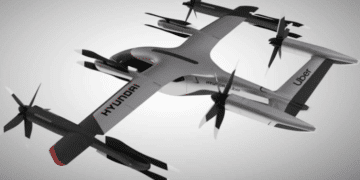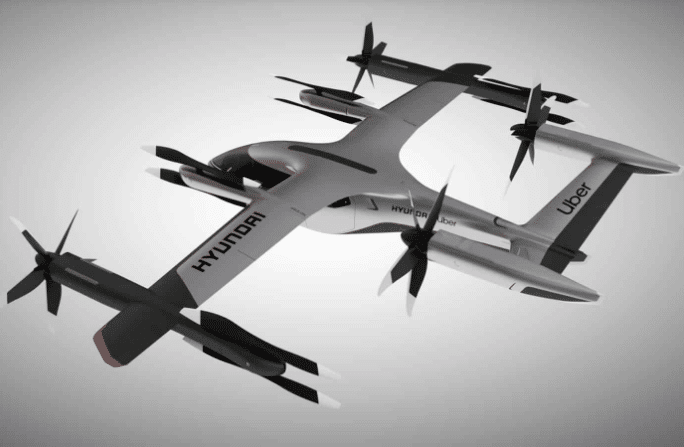Our roads are constantly congested and our cities are crumbling under the weight of the toxic fumes emitted by our internal combustion vehicles. Humanity must reinvent the way it moves. And while there are solutions, including electric and hydrogen-powered cars, none of them are capable of transporting large proportions of goods and people. Hence Hyundai’s idea to develop a flying taxi that moves not on pavement or water, but in the air. The prototype was unveiled in partnership with Uber during CES 2020.
The Hyundai SA-1 is now a reality.
On the sidelines of the CES 2020 that was held a few days ago in Las Vegas in the United States, Hyundai unveiled the SA-1 with its partner, the boss of the VTC Uber. This rather crazy name is none other than that of the first functional prototype of a flying taxi.
Developed by the South Korean car manufacturer, the SA-1 is a 100% electric aircraft with vertical take-off and landing. Capable of operating at an altitude of between 300 and 600, it has a range of 100 km. With a top speed of 290 km/h. This makes it one of the fastest means of locomotion currently available on Earth.
Its cabin can accommodate up to four passengers, apart from the driver. And speaking of the driver, first of all, we’re talking about a driver on board the SA-1. However, eventually, Hyundai plans to make its aircraft 100% autonomous.
What are the business options for the Hyundai SA-1?
The purpose of this article is to provide you with various business ideas that could arise from the operation of a Hyundai SA-1 flying taxi. Although Uber is in a prime position to operate this new device, there is nothing to prevent a private individual from taking the plunge and setting up a flying taxi transportation agency.
However, although this idea is quite tempting, there is as yet no legal framework to regulate the operation of such a business.


































